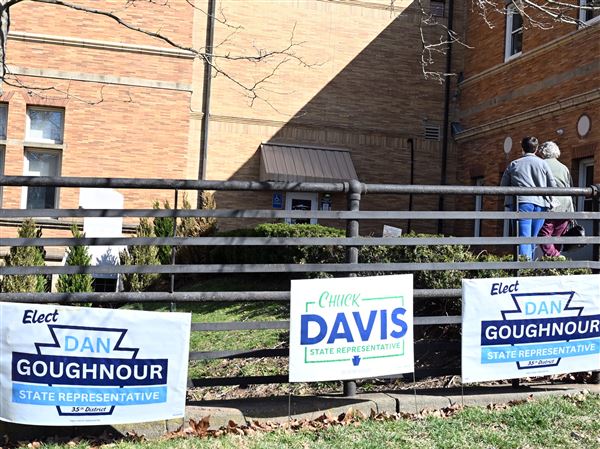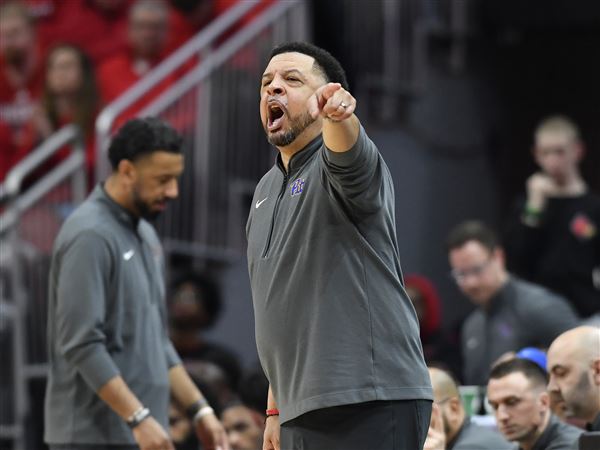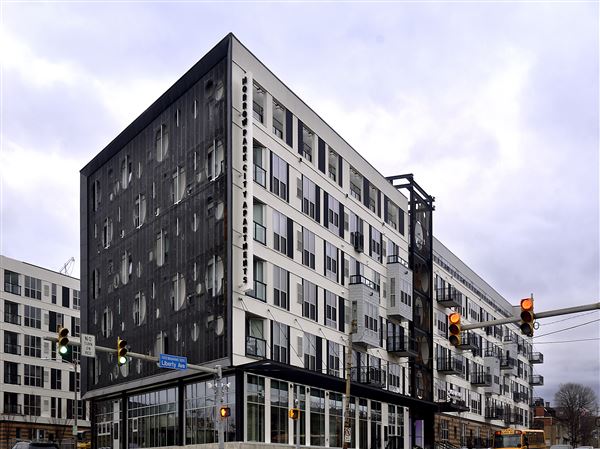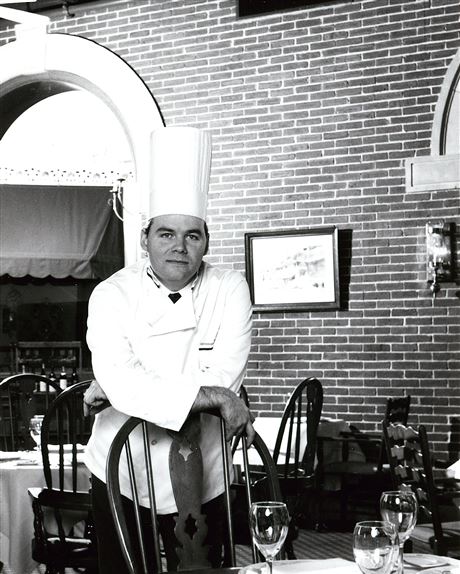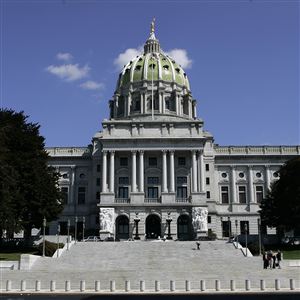On a Tuesday afternoon in early October, Tim Ryan cruised through the Rocky Mountains with his wife, Lynne. The couple was deep into a classic great American road trip, spending a few weeks criss-crossing the United States to visit friends and see the sights before settling down in their new home in Birmingham, Ala.
“It’s the Pittsburgh of the South,” says Ryan, born in the Steel City in 1958.
A few days later, Ryan made a brief return to an old stomping ground: The Culinary Institute of America in Hyde Park, N.Y. He was there to attend the inauguration of the institution’s new president, a position Ryan had held for the previous 23 years until September.
Over those years, and the 20 preceding ones where Ryan worked as a Culinary Institute instructor and administrator, the Pittsburgh native helped lay the foundation for a restaurant revolution in the United States that broadened the definition of American cuisine, and expanded the status of chefs to a widely esteemed profession.
“When I think of Tim, I think of the embodiment of dedication,” says Kwame Onwuachi. “He had this illustrious career, and a big vision for the CIA.”
In the decade since he graduated in 2013, Onwuachi has opened several restaurants as executive chef, earned accolades and awards, co-authored two books and become a multimedia star. Now his New York City restaurant, Tatiana, is widely regarded as one of the very best in the country and he’s opened a new spot, Dōgon by Kwame Onwuachi, in Washington, D.C.
Ryan’s life might have followed a similar path decades prior. If he’d chosen to, he could have been as famous as contemporaneous American chefs like Alice Waters and Charlie Palmer.
Instead, while his legacy is widely lauded inside the culinary world, Tim Ryan is not a household name outside of it.
That’s because L. Timothy Ryan found his calling as an educator, with timing that landed him at the center of great change within the industry and how Americans view chefs.
American cuisine
When Ryan launched the American Bounty restaurant at the Culinary Institute in 1982, the idea of celebrating “American” food seemed an anathema. He came of age in the Continental fine dining era, and that’s how he ran La Normande, the chic nouvelle French restaurant in Shadyside where he was executive chef prior to returning to Hyde Park.
“If you told folks in the restaurant industry you were doing American food, they’d say, ‘What is that? There is no such thing. Are you talking about hamburgers and hot dogs?’” Ryan says. “But of course there is and always has been American cuisine.”
A four-page dinner menu from the opening year states, “America is a melting pot of countries, growing regions and styles of life. The Culinary Institute is blending these to celebrate the emergence of an American style in cooking and food service.”
Among the items served that August were Maryland-style ham stuffed with crabmeat and corn, New England clam chowder, chilled California avocado soup and smoked brisket.
More than 40 years later, the student-run American Bounty is a staple of the campus dining experience.
Its current menu is a reflection of the diverse celebration of American cuisine that Ryan helped usher in. You’ll find masa dumplings with turnips and mirepoix in a guajillo pepper beef broth; grilled shrimp with okra, corn bread, ham and Creole bearnaise; and mussels with apple cider cream, garlic confit, sumac and sourdough.
“He helped elevate the status of chefs and food for Americans past the 1970s era of French dining and home cooking into something that’s now its own genre. He basically built an alliance that has shaped American cuisine and American restaurants,” says Melissa McCart, former Post-Gazette dining critic and current Eater New York editor.
To get there, Ryan, the scrappy, driven East Liberty kid first had to educate himself.
“He’s incredibly curious. He’s a student and a lifelong learner, and he kept developing himself when he came back here. What he didn’t have when he returned, he went out to get,” says John Metz, Jr., the Culinary Institute’s chairman of the board of trustees (and also a son of Pittsburgh, but not related to onetime CIA president Ferdinand Metz).
Son of Pittsburgh
Long before Ryan became a leader at one of the world’s most renowned culinary schools, he was a kid with a dream of working in restaurant kitchens.
“People always joke that I’ll discover someone is from Pittsburgh within minutes of meeting them,” Ryan says.
He grew up in a working-class family with parents who instilled in him a “Pittsburgh ethos” of hard work and humility. He worked in restaurants as a teenager, and landed at the Culinary Institute after graduating from Central Catholic High School.
“You could tell by the way that he carried himself and the questions he asked that he was a curious and driven person,” says provost Mark Erickson, a fellow member of the school’s class of 1977.
Ryan returned to Western Pennsylvania as a chef at Ben Gross Restaurant in Irwin, a position that would lead to the opportunity of a lifetime when he was recruited by Reuben Katz and Norman Schlesinger to open La Normande.
Just 21 years old, Ryan was named executive chef at what quickly became the hottest spot in town.
The young guns
“He was the general. He was extremely competitive, exacting and wanted things a certain way. Yet he was also approachable and fun,” says Andrea Schrenk. “Honestly, the guy just has a gift.”
Schrenk, 20 at the time, was the restaurant’s pastry chef, a position Ryan encouraged her to take. La Normande’s owners wanted an elegant in-house dessert program (it was, after all, the era of tableside showstoppers such as flambés). Ryan saw she had a knack for the blend of precision and creativity needed for pastries.
Schrenk says the young culinary crew, prompted by Ryan, built a kitchen full of ideas. he brought in books about great French chefs, and the team quizzed each other about the ins and outs of nouvelle cuisine.
“He knew the difference between OK, good and excellent. We always strove for excellence. That’s a seed he planted in me, and it stayed with me my whole career,” she says.
(Schrenk, a member of the American Academy of Chefs, worked for 30 years as a pastry consultant at All in Good Taste Productions, spent 24 as the lead pastry chef instructor at the now-closed Le Cordon Bleu Institute of Culinary Arts in Pittsburgh and currently teaches pastry arts at Community College of Allegheny’s Culinary Arts Program.)
Ryan might have stayed in his hometown if another Pittsburgh influence hadn’t drawn him back “temporarily” to Hyde Park.
“I planned to be the Paul Bocuse of America. And then I happened to get recruited back to the CIA by Ferdinand Metz,” Ryan says.
Metz, senior research and development manager for Pittsburgh’s H.J. Heinz Co. from 1956 to 1980, was a few years into his term as the Culinary Institute’s president. Impressed by what he saw at La Normande, Metz invited Ryan to return to the school to open the American Bounty restaurant.
Ryan thought he would be there a couple of years.
“Instead, I became so turned on by what it was like to teach people at the CIA and the power of the school to make a real difference. I had a revelation that I could have a huge impact here, so that’s what I did,” Ryan says. “I took a two-year job and turned it into a 42-year career.”
Continuing education
Ryan returned to New York in 1982 more polished, if still blossoming. His turn to what would become a broad-based American culinary elevation began when he joined the 1983 United States Culinary Olympic team following a series of tryouts.
“It was a big deal in our profession,” says Erickson, who reunited with his classmate as part of the team. “Today people are familiar with cooking competitions on television but back then there weren’t these things.”
Ryan encouraged Ferdinand Metz to recruit Erickson to work for the Culinary Institute. “We’ve been thick as thieves since then,” he says.
In 1985, with Ryan as team captain, the United States won the first World Culinary Cup. Three years later, they won the 1988 Culinary Olympics.
When he was 26, Ryan became the youngest person in the United States to earn a Certified Master Chef certification from the American Culinary Federation.
His academic curiosity matched his quest for technical expertise. He received a bachelor’s degree in 1994 from the University of New Haven. Two years later, he completed a master’s in business administration at the same school, all while continuing to work at the Culinary Institute.
In 2006, Ryan earned a doctorate in education from the University of Pennsylvania.
For his dissertation, he analyzed how professions like architects, engineers and doctors developed to prestigious careers. What would that mean to the CIA, and how could the school impact the culinary profession? Part of the answer was the need to increase levels of education and specialization.
“That's the path we pursued here to professionalize our industry,” Ryan says.
An evolving culinary world
The Culinary Institute of America opened in 1946 as the New Haven Restaurant Institute (it changed its name in 1951) under sponsorship of the GI Bill to train soldiers returning home from World War II. For the next 26 years, it operated as a trade school offering certificates, finally adding its first associate’s degree program in 1972 when the school moved from Connecticut to its current campus in Hyde Park.
“We had a phenomenal two-year associates program. I graduated from it. But to advance a profession you need business training, liberal arts. The industry was becoming more complicated and we had to prepare the profession for it,” Ryan says.
In 1976, the U.S. Department of Labor changed the designation of “chef” from domestic work to recognize it as a profession.
“One of the main things that changed the way they saw the profession was the educational aspect of the job,” says Art Izinga, CCAC’s culinary program coordinator.
Izinga graduated from Central Catholic a few years prior to Ryan, something the two bonded over early in their culinary careers. He, too, was a 20-something working as executive chef of the lauded Hyeholde in Moon at the same time Ryan ran La Normande. Like Ryan, he eventually chose to pursue work as an educator.
By the time Ryan succeeded Ferdinand Metz as the Culinary Institute president in 2001, making a career as a chef had become kind of a cool thing to do.
The Food Network’s programming made celebrities of chefs such as Bobby Flay, Emeril Lagasse and Ryan’s CIA classmate, Sara Moulton. Anthony Bourdain, a 1978 alumni, blew open the door with his book, “Kitchen Confidential: Adventures in the Culinary Underbelly,” in 2000.
“In our era, it was businesspeople opening restaurants who hired chefs as staff. In the modern era, it's chefs opening their own restaurants and starting businesses,” Izinga says. “The education needed to evolve to keep up with that.”
Expanding its reach
During his time as executive vice president in the 1990s, Ryan spearheaded the introduction of the school’s first bachelor’s degree programs. When he became president, he took things to the next level.
In 2006, he oversaw the opening of a new campus in San Antonio, Texas. The Culinary Institute also expanded its Napa Valley campus, which had opened in 1995, to offer an associate’s degree. In 2010, the school went international by partnering with the Singapore Institute of Technology to establish a location overseas.
At Hyde Park, Ryan broadened the range of classes to reflect a growing interest in choosing culinary and hospitality jobs as lifelong professions. His focus on advanced education led to the creation of new bachelor’s degree programs in culinary science, applied food studies and food business management, with master’s degrees following in 2018.
“Everything was so thorough. You went into block after block of techniques. My time there gave me a base of information and a giant level of knowledge. I felt like what I could do was limitless after that,” says Selina Progar, a 2012 Culinary Institute graduate who now works as the lead pastry chef for big Burrito Restaurant Group.
Throughout Ryan’s tenure, the school expanded its student-run restaurants, added a brewery and developed new culinary classrooms. The 170-acre Hyde Park campus, with its main building housed in a former Jesuit seminary, became a hub of culinary education — a sort of Hogwarts meets kitchen laboratory.
“He wasn’t a figurehead doing all of this from afar,” says Onwuachi. “I could schedule a meeting in his office, talk to him and ask for his guidance. I could say, ‘Here's where I need help.’ And that wasn't about sending me a contact, though he did that, too. It was deeper. I think it's because he led from a place of empathy. He was there [as a young chef in a kitchen] before, and you could see that with him.”
Don’t call it retirement
Ryan isn’t the only person, of course, to have impacted the modern definition of American cuisine or restaurant culture in this country. Plenty of acclaimed chefs and countless mom-and-pop restaurants helped build and grow the foundation.
“A lot has been written about how you don’t have to go to culinary school to build a career as a chef. And of course you don’t. However, the examples of when you do show a base of knowledge, networking and camaraderie that has created a foundation for the present and future of American cuisine and international cuisine in America,” McCart says.
Ryan, by his own estimate, has graduated more than 35,000 students during his 23-year run as president.
“People talk about lineage in the culinary profession. They do that for every amazing chef. When you think about Tim’s lineage, his family tree, it’s a forest,” Metz Jr. says.
Even after working for more than four decades at Culinary Institute, Ryan doesn’t have any plans to settle down.
Correction: An earlier version of this story misidentified the length of Ryan’s tenure as president of the Culinary Institute.
“Retirement? I don’t use that word,” he says.
Ryan is now the school’s first chancellor. One of his first projects is overseeing a new eight-part Netflix series on the school that began filming in July. He anticipates there will be multiple seasons.
“Eight decades in, we have a lot of stories to tell about what we’ve done and what we’re up to,” he says.
Though his life will be based in “the Pittsburgh of the South,” the East Liberty kid plans to spend more time back home, too.
“I’ll have more time to come back to town for Steelers and Pirates games,” he says.
First Published: October 24, 2024, 9:30 a.m.
Updated: October 25, 2024, 2:43 a.m.

